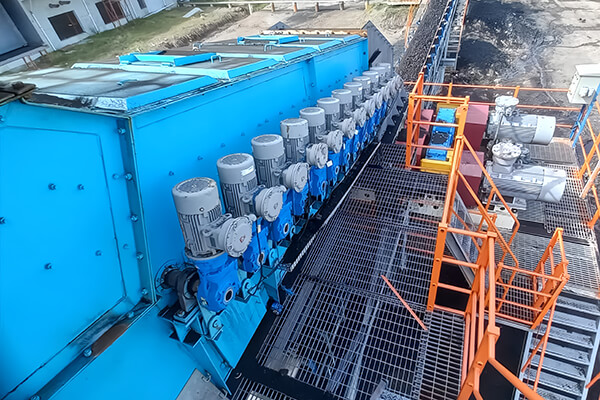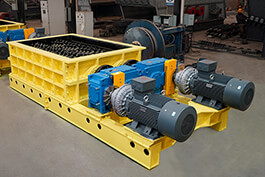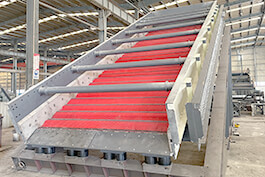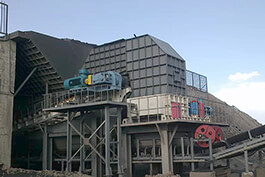Introduction
The majority of thermal power plants use coal as their fuel. The coal entering the plant is raw coal containing large chunks and various impurities. However, the boiler burns coal particles or coal powder. Therefore, after the raw coal is delivered to the plant, it needs to undergo a series of processing procedures through the coal conveying system and the coal grinding system to meet the requirements for direct combustion in the boiler. The main processing techniques include iron removal, classification, coarse crushing, fine crushing, grinding, and air separation, and these processes are carried out by specialized equipment.
Since power generation in power plants is continuous, it is necessary to ensure a continuous supply of fuel. Therefore, most power plants have extremely high requirements for the operational reliability of the coal conveying system and the coal grinding system equipment, and they are usually arranged in dual circuits, with one serving as a backup for the other.
The composition and working principle of Wobbler Feeder
working principle
Wobbler Feeder, due to its strong adaptability to various coal types, durability, high efficiency and low noise, is widely adopted in various screening equipment in thermal power plants and has become the mainstream screening equipment.
composition
The Wobbler Feeder is mainly composed of a driving mechanism, a sieve shaft, a frame, a bypass system and a protection system. Among them, the sieve shaft is the key component, which is formed by connecting multiple toothed sieve plates to a long shaft. Multiple sieve shafts and sieve plates are arranged alternately and with parallel axes to form the sieve surface. During operation, each axis rotates in the same direction under the drive of the motor. When the raw coal enters from the feed inlet, under the push of the sieve shaft and the stirring of the sieve plates, the raw coal rolls forward and the large pieces are discharged from the upper discharge outlet and enter the coarse crusher for crushing, while the small pieces of raw coal pass through the sieve holes and are hung out through the lower discharge outlet, thus completing the screening operation.

Problems and Hazards of Wobbler Feeder Operation
The Wobbler Feeder, produced by professional manufacturers and continuously improved over the years, is designed with reliability and operational intensity considerations similar to those of mining equipment. Compared to the actual operational intensity, it is a "conservative design". Therefore, its common mechanical faults can be resolved through regular maintenance and periodic minor repairs.
The main problems during the operation of the Wobbler Feeder are: the screening efficiency decreases after a period of operation, and the "coal blockage" phenomenon occurs frequently.
The decrease in screening efficiency means that a large amount of small pieces of raw coal directly exits the screen, adding unnecessary load to the subsequent coarse crusher and seriously affecting the output of the crusher. Once the "coal blockage" phenomenon occurs, the Wobbler Feeder completely loses its function and must be shut down for manual cleaning, causing the entire coal conveying system to stop, and even damaging the equipment, bringing great harm to the stable operation of the power plant.
Fault Analysis
Over the years, a large number of professional technicians have conducted extensive analysis and exploration on the operation problems of Wobbler Feeder, accumulating valuable experience. Based on the summary of industry experience, I have also conducted a large amount of analysis and practical application, and made in-depth analysis of the working mechanism of Wobbler Feeder.
After the raw coal is spread onto the screen surface, it moves forward parallelly under the push of the screen shaft: Due to the screen surface being composed of multiple screen rods, its forward trajectory is an up-and-down wavy pattern, and the raw coal advances almost in a jumping manner up and down: At the same time, the toothed screen plates stir it, so under the combined effect of multiple movements such as parallel movement, up-and-down jumping, and continuous stirring, the coal flows forward in a rolling manner. During this process, small pieces of raw coal fall from the sieve holes under the action of gravity, and large pieces of raw coal are discharged from the screen, achieving size classification and screening.
The Wobbler Feeder is arranged in the coal conveying system of the thermal power plant. The screening operation is not carried out independently but is started simultaneously with the coal conveying belt machine and other entire conveying lines. During the transportation of raw coal, "online screening" is carried out.
Raw coal continuously pours into the feed inlet. The Wobbler Feeder must discharge the raw coal at the same speed and quantity while screening. Once there are problems such as clogging, blocking, or stalling, the Wobbler Feeder is immediately filled up, and other equipment is also affected.
Based on the above mechanism and application methods, the causes of faults of Wobbler Feeder can be classified as follows:
1) The screen shaft is mechanically stuck. The raw coal entering the Wobbler Feeder contains large pieces of shale, wood, and even iron blocks, iron bars, etc., which often get stuck in the sieve holes, causing adjacent two screen shafts to slow down until they are stuck, resulting in local obstruction of the coal flow. For the centrally driven Wobbler Feeder, the entire screen surface is directly stuck, leading to coal blockage faults.
2) The push-pitching effect of the coal flow is poor. After the coal flow is poured onto the screen surface from the feed chute, it must be quickly pushed and spread evenly in the horizontal and vertical directions to ensure uniform load distribution and sufficient stirring on the screen surface, and achieve thorough screening.
3) The stirring effect of the coal flow is poor, and the sieve holes are clogged. The raw coal contains moisture and mud, with strong viscosity. The screen shaft is in long-term contact with it. The originally full of teeth screen shaft has turned into a smooth "roller", losing its stirring power on the coal flow, reducing the driving force for the coal flow to advance, and the sieve holes have become narrower, greatly reducing the screening efficiency and conveying capacity. This problem has long been ignored, but through analysis and practice, I believe this is the key reason for the decline in screening efficiency and coal blockage.
Preventative blockage design
1) Adequate driving power should be matched. Suppose that the screening processing capacity is 630t/h to 1500t/h, if multi-axis centralized driving is adopted, the general driving power is 15KW to 22KW; if single-axis driving is used, the general driving power per axis is 2.2KW to 3KW.
2) Using more sieve shafts can improve the screening efficiency and moderately retain the surplus output.
3) The rotational speed of the sieve shaft is higher than that of the belt conveyor. Based on the operating speed of the coal conveying belt conveyor, the rotational linear speed of the sieve shaft can be calculated. The linear speed of the sieve shaft is higher than the belt speed, so that the coal flow does not get stuck.
4) The side-by-side baffle is used for lateral distribution. For Wobbler Feeder with a bypass channel, before the coal flow reaches the screen surface, part of the coal flow first lands on the bypass baffle and then slides onto the screen surface. The bypass baffle is designed as a double-slope structure with a higher middle part and lower left and right parts. This can not only increase the stiffness of the baffle but also allow the concentrated falling coal flow to be moderately dispersed to the left and right sides, which is beneficial for the lateral distribution of the coal flow.
5) The sieve shafts are inclined for lateral distribution. The layout of the sieve shafts with a lower front and higher rear can utilize the gravity and downward impact force to quickly spread the coal flow. It is also beneficial for the forward and rolling movement of the coal flow. Generally, a layout with the last three axes being higher and the rest being horizontal can be adopted, or all the sieve shafts can be inclined.
6) Use long toothed sieve plates in a plum-shaped pattern to improve the stirring ability.
7) Use a double-waved sieve surface. Different from the conventional Wobbler Feeder, the same sieve shaft is connected in series with a series of sieve plates with different top tooth diameters. Each wave unit is regularly assembled, and each sieve shaft presents a wave shape. The adjacent sieve shafts are alternately and complementarily arranged in the peaks and valleys of the wave, forming a double-waved sieve surface. The coal flow passes on this sieve surface, not only rolling and jumping forward and backward but also rolling and jumping left and right, which helps to improve the screening efficiency.
8) Install mud cleaning scrapers. The scrapers are designed in a comb shape, with the three sides of the comb teeth made into knife edges. The scrapers are installed on the horizontal beam at the bottom of the sieve shaft, and the comb teeth are embedded in the gaps between the sieve plates. The knife edge maintains a proper gap with the sieve plates to avoid mechanical entanglement. When the sieve shaft rotates, the coal mud stuck to the sieve plates is scraped off by the scraper, similar to the cutting operation of a lathe. This cleaning is real-time online operation, and it is done as the mud sticks.
9) Set up functions such as coal blockage in the chute alarm and shutdown alarm to alert the operators to promptly eliminate faults.
Conclusion
Although the particle size, moisture content and clay content of the raw coal from each thermal power plant vary, by adopting the anti-blocking design, the screening efficiency of the Wobbler Feeder can be reliably guaranteed, and the coal blockage faults can be eliminated.






.jpg)






